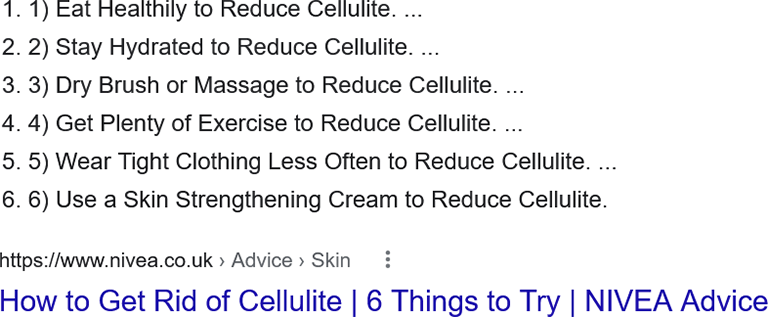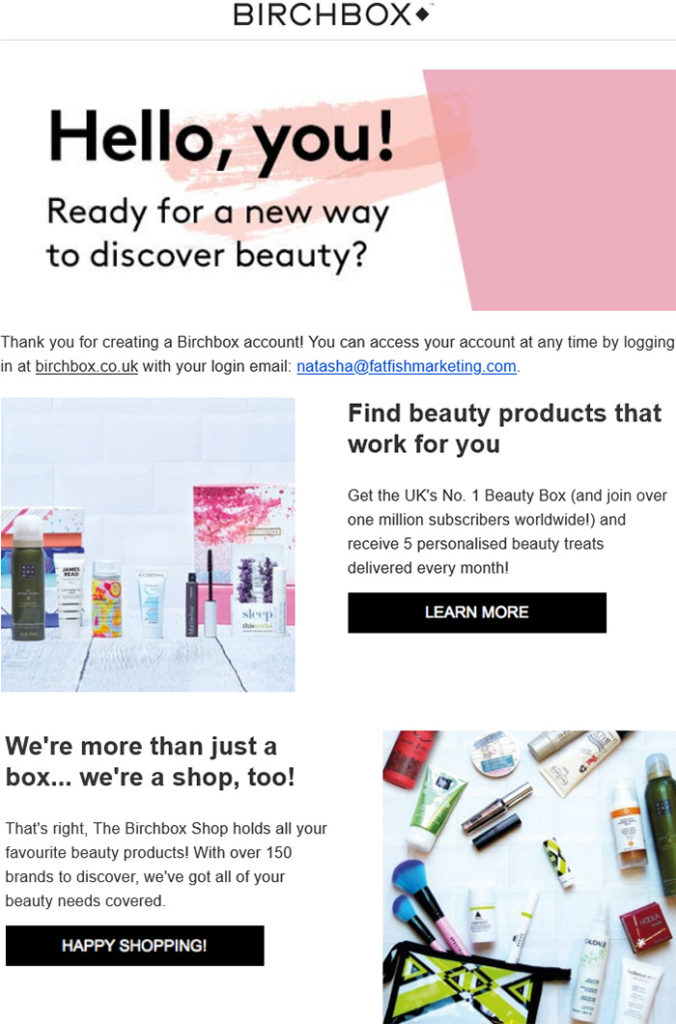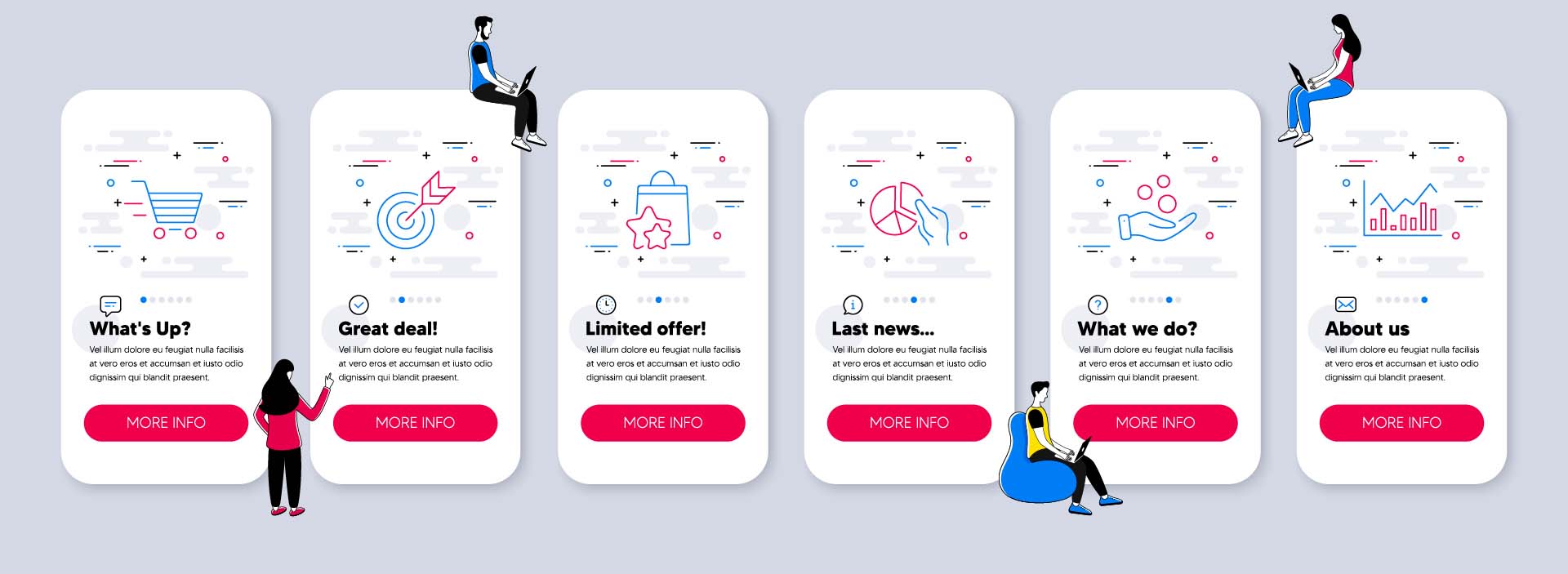eCommerce trends are exactly that: they are patterns and waves that trend and then vanish. To truly achieve a sustainable, valuable consumer market, it’s vital that your business locks down the fundamentals of a strong foundation that will ensure eCommerce customers return time and again.
Over time, this will help to transform your business from an eCommerce business on a periphery, to a business that is thriving and truly converting. So how do we take those clicks to conversions, and how do we get those clicks in the first place?
Buckle up, grab your caffeinated beverage of choice, and get ready to take more notes than Bill Clinton at an IT convention for deleting browser history, as this comprehensive kickstart guide to digital marketing strategies for your eCommerce business is here to tell you all that you need to know to build a successful eCommerce strategy that will help you grow traffic and increase eCommerce sales in 2022.
Reviews
When you’re shopping for things online, what’s the first thing you glance at? Most likely, you’re clicking on the products with the highest rated customer reviews, or going further and filtering results by reviews. You’re not alone, as 92% of consumers reported that they look at reviews to determine whether to make a purchase. In an online world where reviews are so easily attained and checked up on, it’s hard to escape their importance both in terms of customer activation and retention.
Reviews are your golden ticket! When deciding whether they are going to buy a product or not many people will think about if they personally know someone who already bought it and are happy with it. However, due to a large number of products and options available on the market it is not very likely that you will always know someone personally who bought it. So, they will turn to “strangers” on the internet for advice. Advice in a form of a review.
Reviews and customer testimonials have become so important in making purchasing decisions that we often inadvertently trust them as much as a suggestion from close friends and family. So much so, that a whopping 88% of people surveyed reported that they trusted online reviews as much as personal recommendations.
Social proof fertile ground for trust, because people trust people. Reviews have almost replaced the valuable ‘word of mouth’ marketing that retailer have historically relied on, as why should we rely on one person’s recommendation when we can now rely on the recommendation of 5, 10, 100 or 1000 people.
Knowing that others have enjoyed the products and experience gives a strong signal that a brand is trustworthy and that a purchase can be made with confidence. The most frequent and easiest way to obtain this type of social proof is through reviews. Asking your customers to leave feedback and reviews will show them not only that their opinion is valued by the company, but it also helps to create a sense of community and loyalty.
You can give customers the confidence and assurance they need to make a purchase by strategically integrating positive reviews and testimonials throughout your business and marketing communications. With the growth of online shopping year-on-year, now is the time to stimulate incentives for your customers to leave you those all-important reviews.
How Do I Create Customer Incentives for Reviews?
Collecting reviews is an ongoing process for your business but it can be a relatively simple and easy process, so long as the customer service and products are of a standard that you are proud of. Keep the processes for delivering a review both simple and straightforward for the best results.
Customers are becoming increasingly aware of the ‘power of the review,’ so if they have been genuinely pleased with your product, the feedback will reflect it. Use incentives such as through offering a discount code to customers for filling out reviews and for email sign-ups.
A further option is to enter customers into a prize draw if they write a review. In the mailshot itself, write a couple of short sentences explaining to the customer why their review is so useful and valuable to the company, to get them excited to be a part of your brand’s community.
Be Active on All Major Review Websites and Channels
Consumers check for customer reviews on all the major customer review websites and channels, in addition to your website. Regardless of the channel, each one has the ability to persuade, or dissuade, a buyer into buying anything.
Staying active and responding to reviews is also an important part of any review marketing plan, particularly when dealing with unfavourable feedback. The ability to rapidly respond to negative comments and reviews demonstrates that you value the customer’s input and are prepared to learn from your mistakes while still providing your own perspective.
Have a strategy in place for dealing with bad reviews so that you are able to transform them into an opportunity for growth and learning that improves your brand’s overall perception. 94% of customers have attested that a negative review has dissuaded them from proceeding, so make sure that you put the work in there.
The eCommerce Models to Pay Attention To
One word – Amazon. What can we learn from them? Make the customer feel valued and heard. Make sure that they understand that the review they left is really going to make a change.
Blog
A blog is a great way to get consumers to your business website, through clever harnessing SEO that translates to fresh traffic and traction for your website, which ultimately turn into – you got it: SALES. It also important to ensure that what you are writing about is fresh and relevant to your target audience, and would be something your existing customer would also engage with.
Search engine optimisation helps you to find your audience: when a person searches for a keyword on a search engine, SEO improves your web content to make it more likely to emerge as a top result. Its goal is to attract traffic to your website, by choosing the best possible targets to ensure that you obtain both high-quality and high quantity clicks.
There are two types of SEO strategies: black hat and white hat. The term ‘black hat’ refers to a strategy in which information is nearly entirely tailored for search engines rather than consumers. Most of the time, this content is jam-packed full of keywords which makes it unappealing to readers. This strategy is known to make some money quickly but in the long run, it will harm your rankings and search engine credibility and authority.
The best way to implement SEO is through the ‘white hat’ strategy. This is where the content is carefully written, has proper use of keywords, and using tags, to make it legible by search engines. This way the content the audience attracts through searches keeps the reader present and entertained to stay.
Here are some simple SEO tricks to try:
- First and foremost, do your keyword research, you won’t get very far without it.
- Then embed these into the text in long and short form, varying your sentence lengths. This helps your website to build authority in what you’re writing and talking about.
- Make sure you have strong keywords that you have researched that get high numbers of clicks, to then ensure your web page ranks higher on google, this will help drive more organic traffic.
Which eCommerce Website Is Utilising Its Blog to the Full Potential?
Nivea is a popular skincare brand that is not only trying to sell it’s products but gives readers the low-down on everything from skincare to wellness. Their expertise and industry knowledge has certainly been put to good use, as Nivea boasts a library of almost 300 articles.
So which words do they use to achieve this runaway success? One of the key phrases Nivea uses is ‘how to get rid of cellulite’. According to SEMrush data, this keyword alone bring them 2.53% of website traffic. Nivea are masters of SEO and clearly thoroughly research their keywords for each blog post. Through their expert use of keywords, they have beat out Good Housekeeping, WebMD, Cosmopolitan and Women’s Health Mag in Google rankings.

Nevertheless, once a visitor lands on their blog page they are unlikely to leave. Nivea gets the balance just right when it comes to calls to action; they are using tried-and-tested sales methods, but doing so through a soft-sell approach, which works best when most people are exhausted from hard-sell techniques across the net. They use knowledge and facts to help buyers make their own, informed decision.
Social Media Marketing
On social media, you have a plethora of options for marketing your company. Find out the channels your audience demographic utilises the most, and then use a variety of strategies to reach out to them. From the use of ads, sponsored posts, influencers, affiliate marketing and link – the list is endless. You must do the research and find out which channel will help you establish your eCommerce business and ultimately increase eCommerce sales.
Focus on Building a Social Network
It isn’t always the platform with the most users, it is simply finding and figuring out where your target audience is and how your business can add value to their experience. For eCommerce marketing, there is no best social media outlet. Depending on the age and demographic of your audience, it’s important to find the social media that is used most by that demographic.
It’s important to consider the income group, age, gender and interests of your customer and to narrow down where they spend their most time on social media. For example, over half of people under the age of 25 use Snapchat, whereas only 11% of people from the ages 46-55 use it, which drops lower to 4% of people aged 56 and over. Doing this homework will pay off in terms of not spreading yourself too thinly and ensuring that you are using the correct social media for your customer.
Social Media Utilisation Done Right
Social media campaigns are a great way to boost engagement and attention. Dove’s campaign did just that by releasing 1-minute film for their ad campaign called ‘Reverse Selfie.’ The purpose of this was to raise awareness about the influence of editing applications on young people’s self-esteem. By the age of 13, 85 percent of girls were using retouching apps and image ‘filters,’ according to Dove’s Self-Esteem study.
The campaign tries to combat the widespread use of substantially manipulated and retouched photographs on the internet, which invariably struck a chord with the audience across a range of demographics.
The ad campaign also received support from the media, as well as celebrities, such as Lizzo. The ad campaign was thoughtful and relevant to current discussions around beauty standards and the ubiquity of retouched photos on social media.
You don’t own your social media accounts – what would you do if they were shut down without warning? Overnight you could lose your followers, your fan base, your audience, your customers. A mailing list is a great thing to build up and contact your customers directly, so if you did lose your social media platforms, you would still have a way to communicate with them.
When you post a new blog, just make it a rule that a newsletter gets sent out – this doesn’t add much time and will alert your target audience. The more exposure and traffic that your site gains, the larger your emailing list will become. Email marketing is a venue for you to be able to speak directly with your customer.
Getting the Sign-up
The first stage will be to get visitors to your website. There are several methods to do this, but the best and most efficient way to generate traffic is to blog with SEO in mind. You can start small and continually start to add these tools into every piece of content that goes up on your website.
So, how to get the email sign-up in the first place? The key is to add value with what you are offering, that is what these strategies have in common. It may be a PDF of the article which would be upgrading the content or a free course that refers to a lead magnet. There are plenty more strategies to choose from but remember that whatever strategy you pick, make sure it adds value.
Using pop-up incentives, such as ‘Sign up to receive 10% off your first order’ will work like you’re the Pied Piper of email sign-ups. Make sure to send emails that are interesting and have a sales hook/call to action, but without being overly ‘salesy’ otherwise you will lose subscribers as quickly as you gained them.
Email Campaign Experts to Learn From
Birchbox is a prime example of finesse through email marketing through using Campaign Monitor’s intuitive email builder and personalization tool to promote monthly beauty boxes and interact directly with members. Birchbox is a monthly beauty box subscription service that provides four to five carefully selected samples of cosmetics and other beauty products to subscribers. Birchbox’s objective is to provide personalised beauty boxes that are sent directly to your door.

Birchbox’s emails are visually appealing and are put together to draw the customer in, as soon as they see the subject line. Part of Birchbox’s campaign is to make their loyal customers feel special; to achieve this, they use personalised birthday messages with discounts as well as through ensuring that the customer user experience is comfortable and smooth from start to finish.
Birchbox’s email marketing campaign centres itself around personalisation, which boosts sales as well as loyalty and investment in the brand as a whole – like a friend delivering gifts straight to your door.
Paid Ads
Paid ads are never considered by most small businesses because they aren’t free and will eat into their already slim profit margins. Nothing is truly free, though, because everything takes time. Time is money, after all. There are no quick and easy wins or a straight line to success.
Here are a few starting points to help you with the fundamentals of how to gain success through paid advertising.
Know Your Audience
Knowing your audience’s interests and where they spend most of their time on the internet will help you to put up ads in the right places. Remember that the route to a shopper’s heart is through custom content, so if you want to create a meaningful brand experience for your customers, make sure the content aligns with the members of your audience, whether that content marketing means personalised emails with recommendations of products the customer might like or tailored ads that remind a shopper what they forgot in their cart.
Know Your Competition
The majority of PPC advertising is based on an auction system, which means that the more marketers there are, the more expensive it becomes. Some terms are not only less expensive, but simpler to navigate. The more bids there are on a word, the more expensive it becomes.
Another option is to choose simpler key phrases, which some claim work better because the search terms are simpler. You also don’t have to limit yourself to Google; there are a variety of different search engines where you may promote your business for less money. You can also advertise on social media sites such as Facebook, Twitter, Pinterest and YouTube. The main point to remember is to advertise where your clients will be.
Boost Your Impressions
The words that you are bidding on in google need to be relevant and in line with what the consumer is looking for; this will put you at the top of the list for them to click on within the search engine. However, you will need to consider that if you’re specifically targeting a customer to buy this way on Google, bear in mind that it won’t work on platforms like Facebook or Pinterest.
PPC Campaign to Learn From
When it comes to paid ads, Ann Summers has had a lot of success in PPC. In a series of striking Ann Summers PPC campaigns that garnered the Revolution Awards in 2011, Ann Summers used a novel approach to using sponsored search as their branding strategy.
The goal of the strategy was to increase brand awareness and tap into current events by bidding on significant news-related search terms. When you combine this with entertaining brand-related ad text, you’ve got yourself an award-winning PPC campaign.
As well as the commercials being seen by over 1.5 million people, they were also praised by the mainstream media – including the Guardian and the BBC – for their marketing prowess. Not bad for a £4.5k investment.
This doesn’t surprise since Ann Summers has always been a champion for years in showing that PPC does not have to be boring at all. Just remember the 2010 Elections when no one party won an overall majority which resulted in a hung parliament. Guess who decided to make an eCommerce success out of the situation.

Podcasts
Podcasts are an excellent way to increase traffic to your website and products and are relatively cheap to write and produce. This can be accomplished by either starting a podcast for your business or by being interviewed on someone else’s. Network with businesses and find out who is running a podcast. Let them know who you are and ask them to collaborate – this gives you free exposure, and gives them the content that they’re looking for.
Podcasting for business is a marketing approach that, like any other, should be matched with your company’s specific goals. Begin by determining exactly what you want to accomplish through podcasting: is it to generate more money? Improve consumer interaction? Or boost traffic on your website? A good place to start is to define your goals and tailor your podcast to meet them.
Nothing can be sold if it has no worth. This may seem self-evident, yet most marketing podcasters make the error of promoting to the max, resulting in podcasts that are little more than adverts with little or no added value for listeners. Focusing on creating and delivering value through great content and a network of strong relationships is the best method for producing podcasts that sell your business.
Podcasts That Rule the Roost
The Blue Apron Podcast is a great example of how to utilise this platform to gain both views and engagement. The focus has turned to why we eat what we eat. The Blue Apron podcast, featuring chefs, restaurant owners and cookbook authors, brings the brand’s values, ethics and talking points to life.
The new series takes the listener on a journey through the world of food, cooking and beyond, with discussions covering everything from climate change to iconic menu items. The podcast is filled with tips and methods, as well as recommended dishes worth adding to your diet.

Podcast Magic – Without Making the Podcast
Making a podcast is a great way to grow your brand and engage with your target audience, but it isn’t an easy task. It takes time, money, creativity and connectivity with the right people and webs of influence to make it interesting and successful.
A great way to achieve the same exposure without all the extra workload is to find podcasts that match you and your brand, and then reach out for interview. They are looking for someone to add value to their podcast, so think of ways that you are able to do this, and advocate it to them when you make contact.
Another option is to sponsor a podcast that shares the same target demographic as your brand. Sponsoring a podcast is a great way to reach a new audience through the word-of-mouth style of advertising. The podcast’s host will usually introduce your brand to their audience, and through implementing the use of discount codes, you are creating fertile ground for growing trust and interest with a whole new audience.
Forums & Community Boards
You may utilise these forums to speak directly with your customers and receive feedback and insight in its rawest form – without the indelible mark of a review. If they have a question, you can send your community links to relevant web pages, which will also increase traffic to your site. This is not a place to sell, but rather to educate, and it can also be used as a powerful, personable customer service tool.
Great forums to utilise are Facebook communities, Reddit and Quora, which can all be effective marketing tools. Keep in mind a few key guidelines: directly promoting items and services is not the way to build a trusted, sustainable community where both entertainment and/or education about your brand as a whole is key.
The majority of these platform links are ‘nofollowed,’ so SEO value is debatable. As a result, there’s no need to overwhelm the forum; only add links when it is appropriate and supports someone’s query or question. Remember that everything needs to add value – if it doesn’t do this, the community user switches off. Forums and communities are a place where people to talk and discuss matters, so consider these to be a place where you may share your knowledge, experiences, establish relationships, and help others.
Visual Content Marketing
Video Marketing
Video marketing is now the most effective form of communication. Our technology, both in terms of devices and connectivity, as well as communication channels, has evolved to allow us to offer video content seamlessly through social media platforms and services such as YouTube and Netflix.
Traditional forms of media have shown to be significantly less receptive to viewers than video. As a result, individuals have come to expect and rely on this type of information from businesses. Even the most detailed, in-depth written description of a product will not achieve the same level of engagement and ease of consumption as a video on the same subject.
Video marketing is an efficient and proactive way to promote and market your product or service. It has a wide overarching reach to get to your target audience and will increase engagement, and eventually turn viewers into buyers. It’s critical to use this strategy effectively and creatively for that to happen; concentrate on utilising this platform to boost your efforts and deliver your message.
The value of video marketing has massively increased in recent years. The format has utterly dominated the digital environment and has emerged as the most valuable weapon in any company’s marketing arsenal. Invest in producing organic video content, advertising your videos on YouTube, or a combination of the two. This video content can be used on various social media sites or even your blog.
YouTube is one of the first places that people look for answers to any of their wants, needs and questions. This is the reason why it is the world’s third most popular search engine. This is a place any business needs to utilise – the exposure is global. Video marketing is an effective form of online content, generating higher levels of awareness, engagement, and transactions than many other ways and your target market likely uses it.
Using Images as Marketing Collateral
Any media content used to promote a company’s products or services is referred to as marketing collateral. Print materials such as posters and flyers are included, as well as digital content such as catalogues and digital publications. Marketing collateral is anything that can be used to express your company’s brand message, which is where using images as marketing collateral comes into play.
‘A picture is worth a thousand words… but only if it looks good on all screen sizes,’ as the new mantra goes. This is especially true when it comes to your marketing collateral. The first step in marketing is to catch people’s attention. Text descriptions alone don’t have the power to grab people’s attention and hold it. This is where images enter the conversation.
But none of this is relevant unless your image doesn’t look good on all screen sizes.
When it comes to branding, the photographs, and images that you choose, don’t necessarily have to fit in with the company’s color scheme or aesthetic, but that doesn’t mean that there shouldn’t be an iron plan in place. Straying too far from your brand may create a disconnect, which will confuse your customers. Maintain a consistent tone or style. If you’re going to use illustrations, make sure they’re all done by the same person and in the same style.
Where to source images? Try these:
- Professional Photographers. The best photos will be taken by a professional photographer or illustrator. They are the most knowledgeable about your requirements and can create a unique collection of photographs. Try sourcing freelance work through popular freelancing websites.
- Online Websites. Start looking for stock photos if you don’t have the funds for professional photography. Don’t use Google photos; they’re not permitted to use for commercial purposes unless you get permission and licensing from the owner. Searching for photos can take a long time, so try to use the sites that will conduct specialised searches for you, such as Getty Images.
Start looking for stock photos if you don’t have the funds for professional photography. Don’t use Google photos; they’re not permitted to use for commercial purposes unless you get permission and licensing from the owner. Searching for photos can take a long time, so try to use the sites that will conduct specialised searches for you, such as Getty Images.
How to Use Photos
Well, the best place to start is simply to use them all over the place! Websites, email campaigns and posters. The same image can be used across all mediums and throughout a campaign. An effective method for Instagram is to create a large image over multiple grid posts, which packs a punch (visually speaking, of course).
Great Examples of Image Use in eCommerce
A company that has successfully used images as marketing collateral is ASOS, who have used visually attractive content that showcases their products well. They are bold, creative and, more importantly, visually appealing. But how does the “looks good on all screen sizes” mantra fit here? Keep in mind that your website imagery will be displayed not only on your website (which will be visited from desktop alone) but that e.g. Google will pull your product imagery and display it in search results as Rich Snippets. This is where the first task of an image is to entice people to click, i.e. to help improve CTR (click-through-rate).

The images are what catch your eye first, which could be a bold make-up or nail look, which then draws the customer into a thread of images, that lead to a soft selling method.
To learn more about rich snippets read our article on How to Use Schema Markup for SEO.
Organic Traffic
Organic marketing is a great strategy to boost engagement and traffic – many jump into a conclusion that this type of traffic is free. However, although considered to bring best ROI organic traffic should not be considered simple or free. Remember that you are hanging out with the other cool websites on page one only while the big boss, i.e. Google thinks you’re cool enough. So make sure you work on your digital marketing – on-page and off-page SEO – constantly.
To learn more on how to grow your organic traffic read our SEO Starter Guide article.
We want to leave you with this…
eCommerce online marketing isn’t going away anytime soon; effective techniques and strategies are crucial to standing out and being noticed. They help to build trust for new and loyal customers as the number of internet users grows by the millions every year.
Before you choose a trend to implement in your organisation, do a thorough investigation to see if you’ll be able to do what the trend wants you to accomplish. Simply asking your clients if something will work for your company is the greatest approach to find out. The goal, after all, is to maximise customer satisfaction and experience.
Be consistent and make sure that you have the team in place to be able to accomplish your strategy, as without it the traffic and engagement can easily dwindle. This doesn’t have to mean sticking to one strategy that you have seen gain some exposure, it is about implementing and trying out different strategies and finding the combination of methods that work effectively for your business and consistently building and working on them.
Lastly, don’t rely on or at least try to avoid focusing and relying on one strategy. Having multiple sources and strategies to generate traffic is a lot safer, as you’re at risk if all your traffic or sales originate from a single source.
Never become overly reliant on a single marketing channel. Any social media platform could deactivate your account, Google could make an algorithm update that hurts your organic traffic, or an influencer could decide to stop working with you. Have sustainable methods across a variety of sources and show consumers that you care.




















